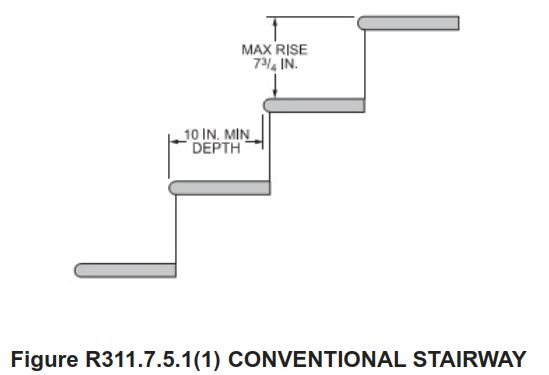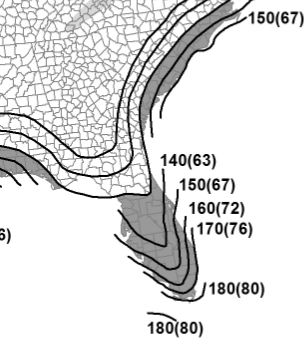09 Jan January 2023: IRC, the Building Code

Number 107, January 2023
From all of us at Willis Sinclair Homes
to all of you a Happy New Year

Teddy & Teddy.
Teddy (on the right), our newest grandson is all dressed for the holidays!

From the Desk of Willis
It’s time to say goodbye to the year 2022 and hello to a whole new year of opportunity! We have had a good year both in business and personally and we look forward to what the new year will bring. In business we navigated the difficult construction environment as best we could and we learned how to do even better in the future. Personally we managed to stay safe from any significant sickness or injury and completed a few family goals for the year.
Life and work is all about doing the best we can now but always learning to do better in the future. If we can just do that then I consider it to be a good year. It’s not about where we start but where and how we finish that counts.
I expect 2023 to be another “interesting” year in construction. I suppose all of the years have their own unique challenges but I feel like for some reason the challenges have been changing more frequently in the past few years. There was a period of time when we could count on construction prices staying relatively stable from year to year. This allowed us to estimate jobs with confidence that we could still hold the price a year later. Pricing has been so volatile for the past two years that it’s now hard to even determine what the price will be week to week. Subcontractors are hesitant to give out prices and in a lot of ways it seems like an exercise in futility because you can’t predict what variable will throw the price off a month from now. We are actively working on solutions to this problem and hope to make great strides in implementing them this coming year.
Labor supply is another “interesting” challenge we face. Everyone talks about the skilled labor shortage and that’s exactly what it is a skilled labor shortage. There is a plentiful supply of labor but many of them are not as skilled as they should be at the task they are supposed to perform. I could write a book on all of the reasons for this but this is what we are dealing with. It’s a problem that’s been in the making for a very long time, long before the Covid-19 pandemic and long before President Trump or even Obama were in office. Many people try to single out “the” reason for our current situation but the reality is that we now have a problem that we must learn to work with. For our part it has required much more preparation and management than in years past. We used to be able to hire someone, tell them the task and trust them to work out the details for the most part. Now we have to lay it out almost as if we are writing a step-by-step instruction manual then watch them to make sure they follow the manual. This “people” problem isn’t going away anytime soon and so we are working hard to get better and faster at giving instructions and managing work so that we can maintain high quality without increasing time and costs.
Many people sit around and complain and make excuses about our current situation but I prefer to lay out the problems as I did above and then determine the solution. I fully believe that there is at least one good solution to every problem we face, and I am doggedly determined to find that solution whatever it takes. I don’t believe in waiting and hoping that others will solve our problems. No matter the problem we face there is always something we can personally do to solve or help solve it. No one else in the world will care as much about our problems as we do ourselves and so we should be the most motivated to solve them. We just have to decide to spend our time, talents and resources to find the solutions to our problems and if we will only do that then we could solve every problem we face. We should always remember though that someone else likely has the same or similar problem and if we help them solve their problem then we will greatly increase the possibility that we will solve our own problem quicker.
This month’s construction subject is the Building Code. One of the things in construction that doesn’t change often is the building code. A new version of the building code is released every three years but the changes are often very minor. Structurally, houses haven’t changed much in a very long time. In the mid-90’s the building code was revised to include wind and seismic construction methods and some of these have changed a little but for the most part structural methods have remained the same. Safety standards change a little more frequently but still isn’t usually anything major. What has mostly changed in the last decade is the addition of energy efficiency requirements. We at Willis Sinclair Homes rarely build anything that is “code minimum” but we still reference the code frequently to make sure we don’t miss anything and especially the new changes or additions. There is tremendous love/hate attitudes about the building code within the construction industry but the reality is that it levels the playing field among builders and also gives homeowners some confidence that their house will at least meet some minimum standard. Read on to learn more about the Building Code and how it benefits homeowners.
IRC (International Residential Code)
If you listen to builders very long, you may well hear them complaining about the “building code.” Some cynics might even say the only reason for the building code is so insurance companies know the house they are insuring is built well and it costs them nothing to know that. Others may think the reason for building inspectors is basically to spy on your home so they can inform the tax appraiser.
There are many extremely good points about the code regardless of the reason for the code in the first place. It has taken years to basically outline good practices in residential construction so builders don’t have to “reinvent the wheel” every time they build a house.
The code (references here to the building code or the code refer to the residential code) provides answers for many questions or details that may arise during home construction.
For example, stairs must be a maximum of 7 ¾ inches high with a maximum variation in height of 3/8 inch. The depth of the tread must be a minimum of 10 inches with a variation of 3/8 inch or less. This refers to each flight of stairs between floors or landings. The reason for these dimensions is that research shows it is comfortable (and safe) to use stairs that meet these restrictions.
The code also outlines the height of decks and landings at doorways. Again, this is based on safety issues. The code book also has illustrations to clarify details. This figure shows how step depth and rise are measured.

The code also details resistance to damaging winds and earthquake risks (both significant in our area), but that does not really concern us at Willis Sinclair because the homes we build are structurally designed and sealed by an engineer who takes the code into account when he does his design. Once we have the engineer’s design, we typically exceed his requirements.
Where we build, flooding is an issue particularly during a hurricane that brings a large storm surge. The code spells out what has to be done when building in an area that may well flood. If it were not for the code, it would be anyone’s guess if an area might flood and how that risk could be mitigated.
 A portion of the IRC wind map
A portion of the IRC wind map
This wind hazard map shows the design criteria for our area is 140 miles per hour (or 63 meters/second). Engineers use this information for their structural design.
The code also discusses egress [a means of exiting a room]. It describes which rooms must have egress and what size the opening (window or door) must be. Without the code, how would a builder know what size window was needed for safety?
Smoke alarm placement is also called out in the code. Obviously adding “smokes” adds cost and an unscrupulous or careless builder might try to cut costs while endangering lives if it were not for the code.
Carbon monoxide detectors are required if the dwelling space has a fuel burning fireplace or if there is an attached garage. Carbon monoxide is an odorless, clear gas that can kill. The carbon monoxide detector will sound the alarm if it detects this gas.
The code even spells out the minimum size joists and rafters that are required. There are not many safety and structural details omitted in the (roughly) 1,000 page code book.
We at Willis Sinclair support the Residential Code. We welcome inspector visits because we want to make sure everything is done correctly and a second set of eyes never hurts.
The code also gives us a target to exceed when we build quality homes. If you have any questions or concerns about the IRC, call or text us (843 846 2500). We will be happy to sit down and discuss any issues with you. No cost or obligation on your part, of course.
We hope you have a blessed New Year from all of us! Ready or not, here comes 2023!





No Comments